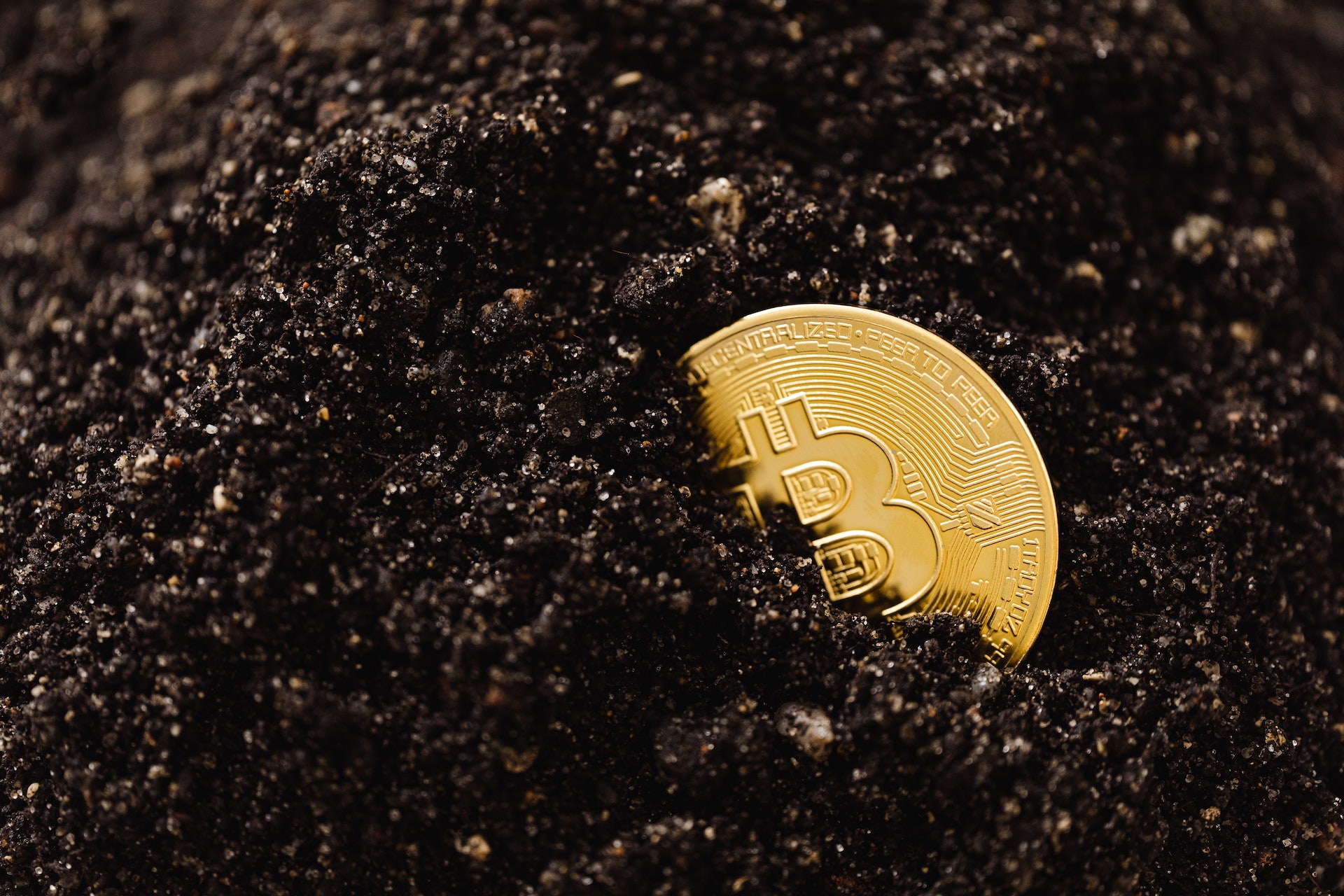Introduction
In the ever-evolving realm of cryptocurrencies, Bitcoin stands as the pioneer and arguably the most well-known digital currency. At the core of its functionality lies a fascinating and intricate process known as Bitcoin mining. While Bitcoin itself might seem elusive to many, understanding how it is mined and the underlying mechanisms is crucial to appreciate its significance.
What is Bitcoin Mining?
Bitcoin mining, at its essence, is the process of validating and recording transactions on the Bitcoin blockchain. This might sound relatively straightforward, but it’s an incredibly complex and competitive endeavor. Imagine a global race where miners compete to solve mathematical puzzles, and the winner gets to add a new “block” of transactions to the blockchain. This process is essential for the network’s security and the creation of new Bitcoins.
Miners play a pivotal role in ensuring the integrity of the Bitcoin network. They validate transactions, prevent double-spending, and contribute to the decentralization of the system. In a world where trust is often placed in centralized institutions, Bitcoin mining offers a decentralized alternative for verifying and recording transactions.
The Blockchain: Foundation of Bitcoin Mining
To comprehend Bitcoin mining fully, one must grasp the significance of the blockchain. The blockchain is a public ledger that contains records of all Bitcoin transactions. It’s immutable, meaning once a transaction is added, it cannot be altered or deleted. This transparency and immutability are at the core of Bitcoin’s appeal.
Miners are like the gatekeepers of this ledger. They bundle unconfirmed transactions into blocks and compete to add these blocks to the blockchain. The first miner to solve a complex mathematical puzzle gets the privilege of adding the block and, in turn, receives a reward in Bitcoins. This reward is a combination of newly minted Bitcoins and transaction fees from the included transactions.
Proof of Work: The Mining Consensus Algorithm
At the heart of Bitcoin’s security is a consensus mechanism known as Proof of Work (PoW). PoW is the backbone of the network, ensuring that only valid transactions are added to the blockchain. It achieves this by making it computationally expensive and time-consuming for miners to add new blocks.
In a PoW system, miners must solve a cryptographic puzzle, often referred to as finding the “nonce,” which is a random number. This process requires immense computational power, making it challenging and resource-intensive. Miners worldwide compete to be the first to find the correct nonce, and the winner gets to add a new block and claim their reward.
PoW’s brilliance lies in its decentralization. It prevents any single entity from gaining too much control over the network, as doing so would require an astronomical amount of computational power.
The Mining Hardware
Now that we’ve covered the fundamental concepts, let’s delve into the hardware that miners use to participate in this competitive race.
Application-Specific Integrated Circuits (ASICs)
ASICs are the workhorses of Bitcoin mining. These specialized machines are designed for a single purpose: to mine Bitcoins as efficiently as possible. Unlike general-purpose computers, ASICs are finely tuned to perform the specific calculations required for PoW. They offer unparalleled computational power and speed, making them the preferred choice for serious miners.
The advantage of ASICs is clear: they provide the highest hash rates, meaning they can perform more calculations per second than other hardware. This ensures that ASIC miners have a competitive edge in solving the cryptographic puzzles and, consequently, a better chance of adding new blocks to the blockchain.
However, there’s a downside to ASICs as well. Their specialization means they are designed solely for Bitcoin mining and are not adaptable to other tasks. Additionally, they can be costly, making them less accessible to casual miners.
Graphics Processing Units (GPUs)
Graphics Processing Units, or GPUs, are versatile pieces of hardware originally created for rendering graphics in video games and other multimedia applications. However, miners quickly realized that GPUs are well-suited for the parallel processing required in cryptocurrency mining.
GPUs are more affordable and accessible than ASICs, making them a popular choice among individual miners. They strike a balance between computational power and versatility, as they can be used for other tasks besides mining.
One advantage of GPUs is that they are programmable, allowing miners to switch between different cryptocurrencies based on profitability. This flexibility is appealing, especially in the rapidly evolving world of cryptocurrencies.
Field-Programmable Gate Arrays (FPGAs)
Field-Programmable Gate Arrays, or FPGAs, occupy a middle ground between ASICs and GPUs. They offer some of the flexibility of GPUs while approaching the performance of ASICs.
FPGAs are programmable like GPUs, which means they can be reconfigured for different tasks. Miners can optimize them for various mining algorithms, making them adaptable to different cryptocurrencies. This flexibility allows miners to pivot to more profitable coins when necessary.
While FPGAs are more efficient than GPUs, they still lag behind ASICs in terms of raw hashing power. However, their adaptability can make them a compelling choice for miners looking for a balance between performance and flexibility.
Bitcoin Mining Pools
Individual Bitcoin mining can be an arduous and uncertain endeavor, but this is where mining pools come into play, transforming the landscape for miners.
How Mining Pools Work
Mining pools are collaborative networks where multiple miners combine their computational power to increase their chances of successfully mining a block. Instead of competing against one another, pool members work together to solve the cryptographic puzzle and share the rewards proportionally.
The process begins with miners contributing their hashing power to the pool. When the pool successfully mines a block, the rewards are distributed among the participants based on their contributed computational power. This approach provides a more steady and predictable income for miners, as they receive smaller and more frequent payouts compared to solo mining.
Mining pools also reduce the risk of variance, ensuring that miners receive rewards even if they have limited computational resources. This collaborative approach democratizes Bitcoin mining, allowing more individuals to participate effectively.
Rewards and Payment Systems
Mining pool rewards typically consist of two components: block rewards and transaction fees.
- Block Rewards: When a mining pool successfully mines a block, it receives the block reward, which is currently 6.25 Bitcoins. This reward is divided among the pool members based on their contributed computational power.
- Transaction Fees: In addition to the block reward, miners also collect transaction fees from the transactions included in the block. Users voluntarily attach transaction fees to their transactions to incentivize miners to prioritize them. These fees can vary significantly and are distributed among the pool members in proportion to their contribution.
Mining pool operators usually charge a small fee for their services, typically around 1-2% of the rewards earned by pool members. This fee helps cover the operational costs of running the pool.
Mining pools provide a more stable income stream for miners, making it an attractive option for both individuals and large-scale mining operations. However, it’s essential to choose a reputable and well-established mining pool to ensure fair and timely payouts.
The Mining Process
With a solid understanding of the key components of Bitcoin mining, let’s explore the intricacies of the mining process itself.
Mining Nodes
At the heart of Bitcoin’s decentralized network are nodes. Nodes are computers that run the Bitcoin software and participate in validating and propagating transactions. Within the network, there are two primary types of nodes: full nodes and mining nodes.
- Full Nodes: Full nodes maintain a complete copy of the Bitcoin blockchain and validate all incoming transactions. They play a critical role in ensuring the integrity of the network by independently verifying transactions. Full nodes contribute to the network’s decentralization and security.
- Mining Nodes: Mining nodes are a subset of full nodes. While they also validate transactions, their primary role is to compete in the mining process. Mining nodes use their computational power to solve the cryptographic puzzle required to add a new block to the blockchain.
The decentralized nature of Bitcoin nodes ensures that no single entity has control over the network. It’s this collective effort of nodes worldwide that makes Bitcoin resistant to censorship and tampering.
Finding the Nonce
One of the most crucial aspects of Bitcoin mining is the process of finding the nonce—a term derived from the phrase “number used once.” The nonce is a 32-bit (4-byte) field in the block header that miners can adjust. Miners must find a nonce that, when combined with the other data in the block, results in a hash value that meets specific criteria.
This process is essentially a trial-and-error search. Miners repeatedly change the nonce value, compute the hash of the block header, and check whether the resulting hash meets the current network’s difficulty target.
The difficulty target is a crucial element of the mining puzzle. It determines how challenging it is to find a valid nonce. The Bitcoin network adjusts this difficulty approximately every two weeks to ensure that new blocks are added to the blockchain approximately every ten minutes, regardless of changes in computational power.
The miner who successfully finds a valid nonce and hashes a block header below the current difficulty target gets to add the block of transactions to the blockchain. This miner is rewarded with the block reward and any transaction fees included in the block.
The difficulty of finding a valid nonce is precisely what makes Bitcoin mining so competitive and resource-intensive. Miners worldwide continuously compete to find the next valid nonce, with the first one succeeding earning the right to add a block and claim their rewards.
Mining Difficulty
The mining difficulty is a critical component of the Bitcoin network that ensures a consistent block creation rate.
The Bitcoin network aims to maintain an average block creation time of approximately 10 minutes. To achieve this, the mining difficulty is adjusted approximately every two weeks based on the total computational power (hash rate) of the network.
When more miners join the network or upgrade their hardware, the overall hash rate increases, making it easier to find valid nonces. To counteract this and maintain the 10-minute block time, the network raises the difficulty level. Conversely, if the hash rate decreases, the difficulty is lowered to maintain the target block time.
This self-adjusting mechanism ensures that Bitcoin remains secure and resistant to rapid changes in computational power. It’s a crucial feature that contributes to the network’s stability and predictability.
Block Rewards
The rewards earned by miners play a central role in incentivizing and sustaining the Bitcoin network. These rewards consist of two components: newly minted Bitcoins and transaction fees.
- Newly Minted Bitcoins: When a miner successfully adds a new block to the blockchain, they are rewarded with a predetermined number of newly minted Bitcoins. This reward is halved approximately every four years in an event known as “Bitcoin halving.” As of this writing, the block reward is 6.25 Bitcoins, but it started at 50 Bitcoins when Bitcoin was first created. The halving events reduce the rate at which new Bitcoins are introduced into circulation, ultimately capping the total supply at 21 million. This reduction in block rewards serves two purposes. Firstly, it controls inflation, ensuring that new Bitcoins are distributed gradually. Secondly, it increases scarcity, potentially driving up the value of existing Bitcoins over time.
- Transaction Fees: In addition to the block reward, miners also collect transaction fees from the transactions included in the block they mine. Transaction fees are paid voluntarily by users to prioritize their transactions in the blockchain. When users want their transactions to be processed quickly, they attach higher fees, which incentivizes miners to include their transactions in the next block. Transaction fees can vary widely based on network congestion and user preferences. Miners prioritize transactions with higher fees, as they contribute to their overall earnings.
The combination of block rewards and transaction fees provides miners with a financial incentive to secure the network and validate transactions. This system is designed to promote the network’s sustainability and security.
Energy Consumption and Environmental Concerns
One of the most significant debates surrounding Bitcoin mining is its energy consumption and environmental impact. The energy-intensive nature of Bitcoin mining has raised valid concerns about its carbon footprint and sustainability.
Bitcoin mining’s energy consumption primarily arises from the Proof of Work (PoW) consensus mechanism, which relies on miners solving complex mathematical puzzles. As the network’s hash rate increases, more computational power is required to compete in mining, leading to higher energy consumption.
The majority of Bitcoin mining operations are powered by electricity, and the environmental impact largely depends on the source of that electricity. Some miners rely on renewable energy sources, such as hydroelectric, solar, or wind power, which have a lower carbon footprint. However, many others use fossil fuels, such as coal and natural gas, which emit greenhouse gases and contribute to environmental degradation.
The debate over Bitcoin’s environmental impact is ongoing, and opinions vary widely. Critics argue that the energy consumption associated with Bitcoin mining is unsustainable and contributes to climate change. Proponents, on the other hand, contend that the traditional banking and financial systems also consume vast amounts of energy and that Bitcoin’s transparency and decentralized nature may ultimately drive the adoption of cleaner energy sources.
It’s worth noting that some initiatives aim to make Bitcoin mining more environmentally friendly. These include efforts to transition to renewable energy sources and the development of more energy-efficient mining hardware.
Bitcoin Halving
Bitcoin halving events are pivotal moments in the cryptocurrency’s history, significantly impacting the mining process and the network’s dynamics.
A Bitcoin halving event occurs approximately every four years, or after every 210,000 blocks are mined. During a halving event, the block reward that miners receive for adding a new block to the blockchain is reduced by half. This reduction has a profound effect on the rate at which new Bitcoins are created and introduced into circulation.
The purpose of Bitcoin halving events is twofold:
- Controlled Supply: By reducing the rate at which new Bitcoins are minted, halving events control the supply of the cryptocurrency. This controlled supply is designed to prevent inflation and ensure that Bitcoin remains a deflationary asset.
- Incentivization: Halving events serve as an economic incentive for miners to continue securing the network. As the block reward is halved, miners must rely more on transaction fees to sustain their operations. This incentivizes miners to prioritize transactions with higher fees, ensuring that the network remains functional and secure.
The most recent Bitcoin halving occurred in May 2020, reducing the block reward from 12.5 Bitcoins to 6.25 Bitcoins. As a result, the rate at which new Bitcoins are created was effectively halved. This event has significant implications for miners, as it impacts their potential earnings and profitability.
Bitcoin halving events are closely monitored by the cryptocurrency community, as they can influence the supply and demand dynamics of Bitcoin, potentially affecting its price and market behavior.
Challenges and Future of Bitcoin Mining
As Bitcoin continues to evolve and gain mainstream recognition, the world of Bitcoin mining faces several challenges and opportunities on the horizon.
1. Increasing Competition: Bitcoin mining has become highly competitive, with large mining operations and mining pools dominating the landscape. This increased competition makes it more challenging for individual miners to compete effectively. As a result, small-scale miners may struggle to remain
profitable.
2. Energy Efficiency: The energy consumption associated with Bitcoin mining has drawn scrutiny. Miners are actively seeking ways to reduce their carbon footprint, including the use of renewable energy sources and the development of more energy-efficient mining hardware. The future of Bitcoin mining may see a shift toward greener practices.
3. Regulatory Challenges: Bitcoin mining operates in a complex regulatory landscape. Some regions have embraced it, while others have imposed strict regulations or outright bans. The evolving regulatory environment poses challenges and uncertainties for miners worldwide.
4. Technological Advancements: Mining hardware and software continue to evolve rapidly. New innovations, such as more efficient ASICs and mining algorithms, can change the competitive landscape and impact miners’ profitability.
5. Sustainability: The sustainability of Bitcoin mining is a topic of growing concern. Miners and the cryptocurrency community are exploring ways to make mining operations more environmentally friendly to address these concerns.
6. Decentralization: Maintaining the decentralization of the Bitcoin network is a priority. Efforts are underway to ensure that mining power remains distributed among various participants and does not become concentrated in the hands of a few dominant players.
Conclusion: Navigating the Bitcoin Mining Landscape
In conclusion, Bitcoin mining is the foundation of the cryptocurrency’s security and functionality. It is a complex, competitive, and evolving process that underpins the entire Bitcoin network. As miners continue to adapt to challenges and innovations in the industry, the future of Bitcoin mining remains dynamic and promising.
The significance of Bitcoin mining extends beyond its technical intricacies. It represents a revolutionary shift in how we think about trust, currency, and financial systems. Bitcoin’s decentralized nature and the collaborative effort of miners worldwide challenge the traditional centralized banking systems and empower individuals to participate in a new and decentralized financial ecosystem.
FAQ Section
Q1: Is Bitcoin mining profitable for individuals?
A1: Bitcoin mining can be profitable for individuals, but several factors influence profitability. These include the cost of electricity, the efficiency of mining hardware, competition from large mining operations, and the current price of Bitcoin. It often requires a substantial initial investment in specialized hardware and consumes significant energy. Mining pools are a popular choice for individuals looking to share resources and rewards and increase their chances of earning a steady income.
Q2: How long does it take to mine one Bitcoin?
A2: The time it takes to mine one Bitcoin varies based on factors such as computational power, network difficulty, and luck. On average, the Bitcoin network aims for a block creation time of approximately 10 minutes. However, individual miners may take longer or shorter periods to mine a single Bitcoin. As of this writing, the block reward is 6.25 Bitcoins per block.
Q3: Can I mine Bitcoin with just my computer?
A3: While it’s technically possible to mine Bitcoin with a regular computer, it’s no longer profitable due to the intense competition and specialized hardware (ASICs) dominating the field. Mining with just a computer is not cost-effective, as it would consume more in electricity costs than the value of the mined Bitcoin.
Q4: Is Bitcoin mining environmentally friendly?
A4: Bitcoin mining’s environmental impact is a subject of debate. It consumes a significant amount of energy, primarily from fossil fuels, leading to concerns about its carbon footprint. However, some miners and initiatives are exploring more eco-friendly alternatives, such as renewable energy sources and energy-efficient mining hardware, to mitigate these concerns.
Q5: What happens when all 21 million Bitcoins are mined?
A5: Bitcoin’s total supply is capped at 21 million. As miners continue to mine, the block rewards decrease over time through halving events. It’s estimated that the last Bitcoin will be mined around the year 2140. At that point, miners will rely solely on transaction fees for income. This scarcity is designed to increase the value of existing Bitcoins over time and create a deflationary monetary system.




